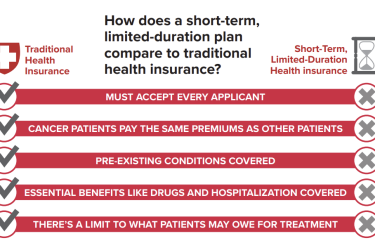State and federal policymakers should take steps to make dental benefits less costly and more widely available under the Affordable Care Act (ACA) according to a panel of experts convened by the nonprofit National Academy for State Health Policy.
While oral health advocates were heartened to see pediatric dental benefits included among the Health Policy law’s essential health benefits (EHB), the task of making them available on state marketplaces and getting consumers to buy them has proven to be complicated.
Dental benefits have traditionally been sold separately from other types of health insurance, and the “ACA and subsequent federal guidance treat pediatric dental benefits differently from the other EHB categories, creating unique challenges in implementing the vision of a guaranteed pediatric dental benefit,” concludes the experts’ report, released today.
On some state exchanges, stand-alone dental benefits, offered separately from medical benefits, can be easier to find than dental benefits that are embedded into comprehensive health care plans. But the stand-alone benefits can come with added costs for the families who buy them, according to the report “Improving Integration of Dental Health Benefits in Health Insurance Marketplaces.”
While embedded dental benefits are included in calculations for financial assistance under the health care law, stand-alone dental benefits are not. While subsidized cost-sharing reductions apply to embedded dental benefits, they do not apply to stand-alone dental plans. Finally, customers who buy stand-alone dental benefits may also face separate out-of-pocket maximums when paying for their dental care.
Cost may discourage parents from buying dental benefits for their children on the exchanges. And while the marketplaces are required to offer pediatric dental benefits, there is no federal requirement for parents to buy them. (That lack of a mandate is impacting pediatric dental enrollment rates, according to an early analysis by the American Dental Association.)
The low enrollment rates raise concern that children will continue to go without dental care.
Finally, while the ACA does not include adult dental coverage among the essential health benefits spelled out by the law, adults need dental care too.
The report, drawn up by a group of state and federal marketplace officials, dental stakeholders and national experts, offered a number of suggestions aimed at improving the integration of dental benefits into health care coverage under the ACA.
Among them: encouraging the wider availability of embedded dental plans; revisiting federal guidelines so as to include stand-alone pediatric dental benefits when calculating financial assistance; strengthening requirements that parents buy dental benefits for their children, (as in the states of Nevada, Kentucky and Washington); training health care exchange navigators to better understand the dental benefits available on state exchanges; and including adult dental benefits among the essential health benefits covered by the ACA.








